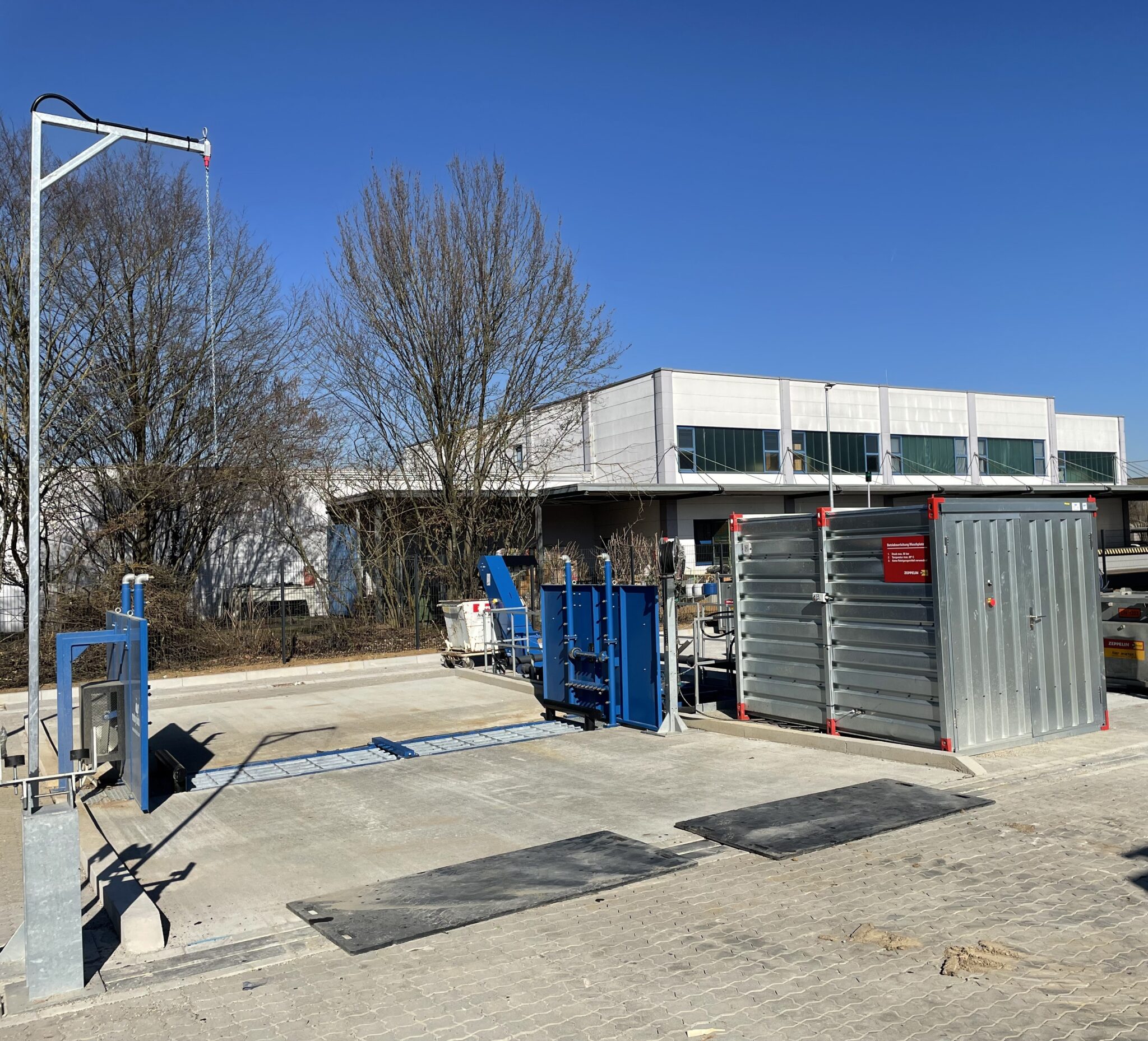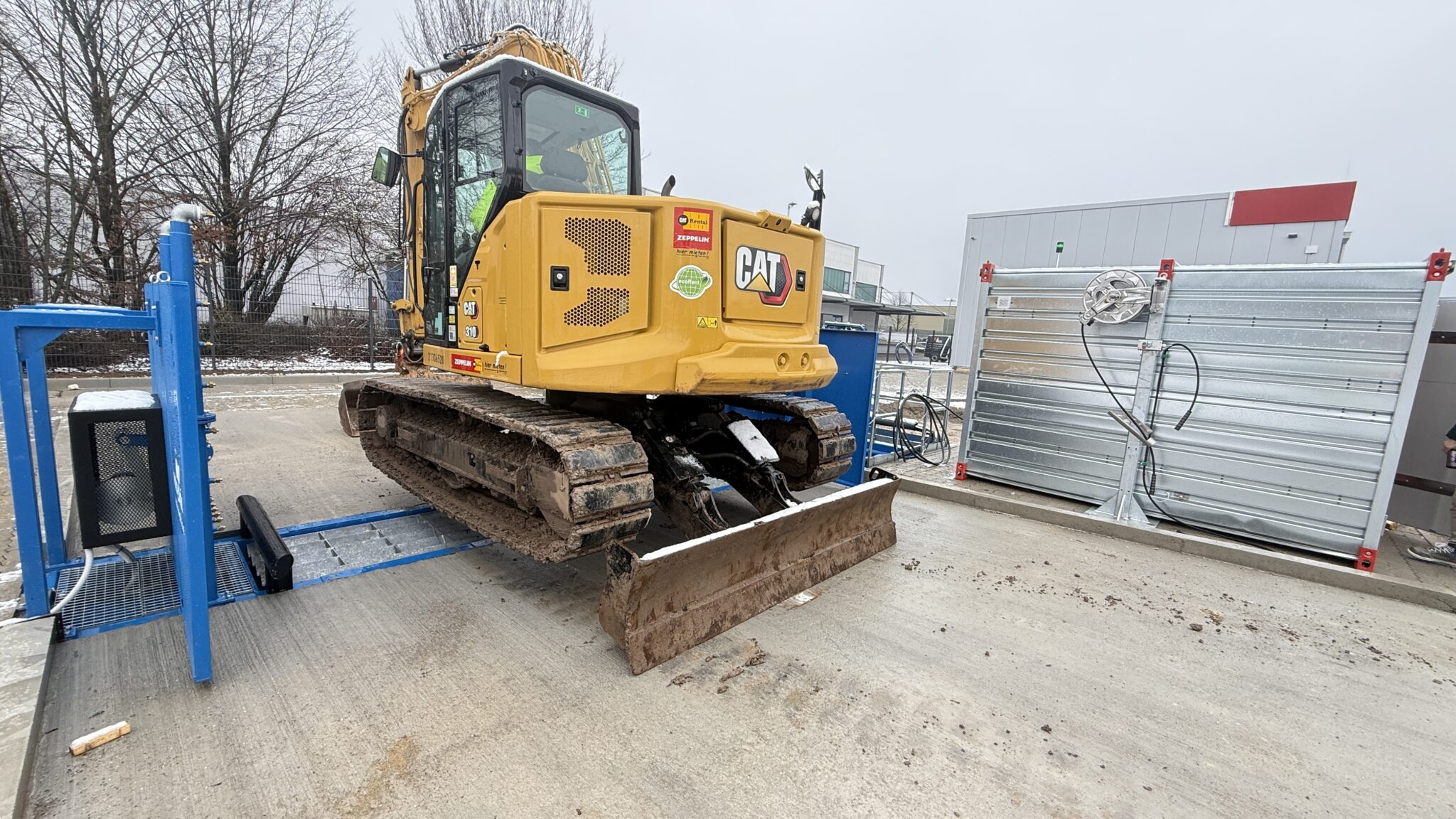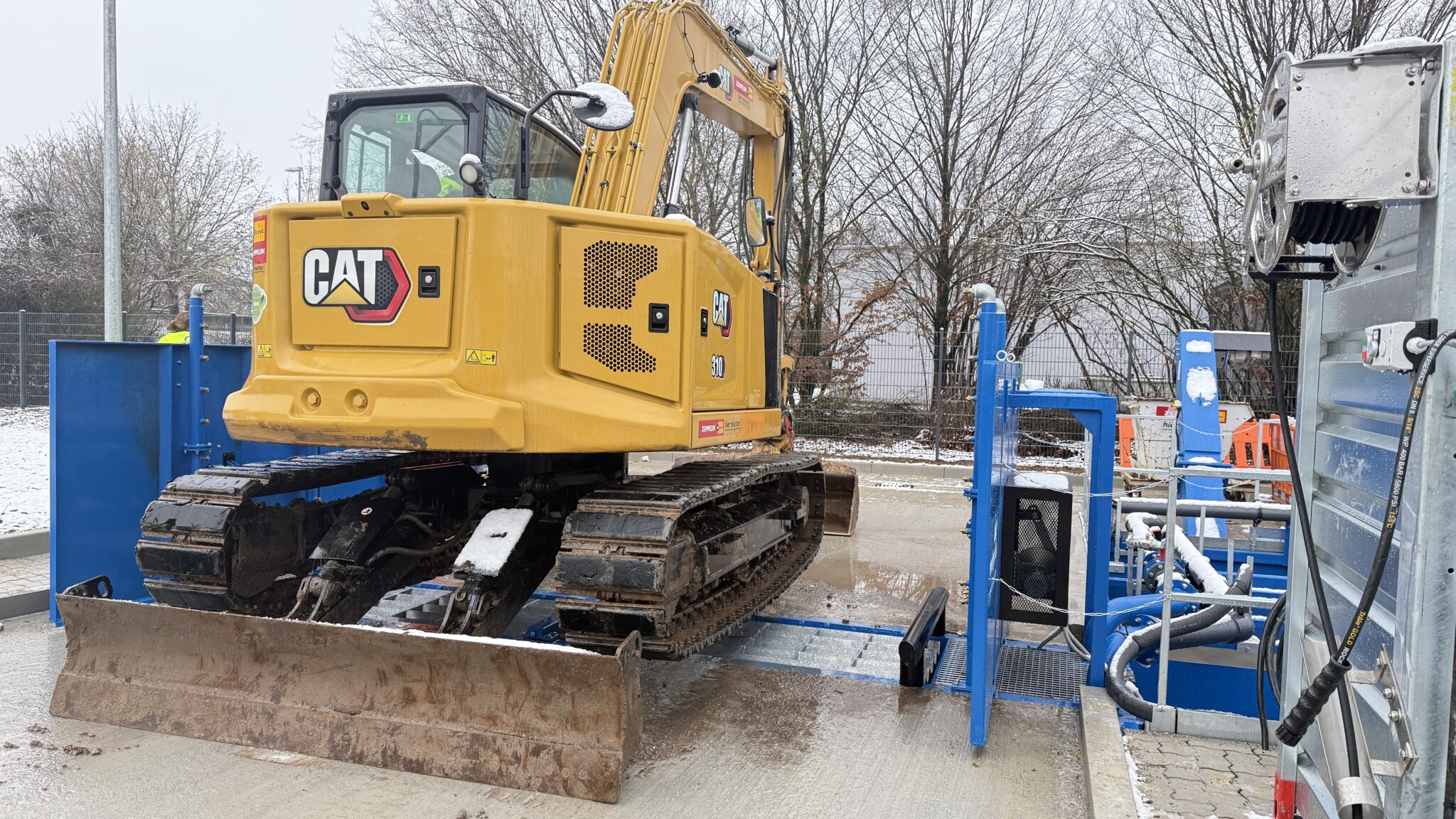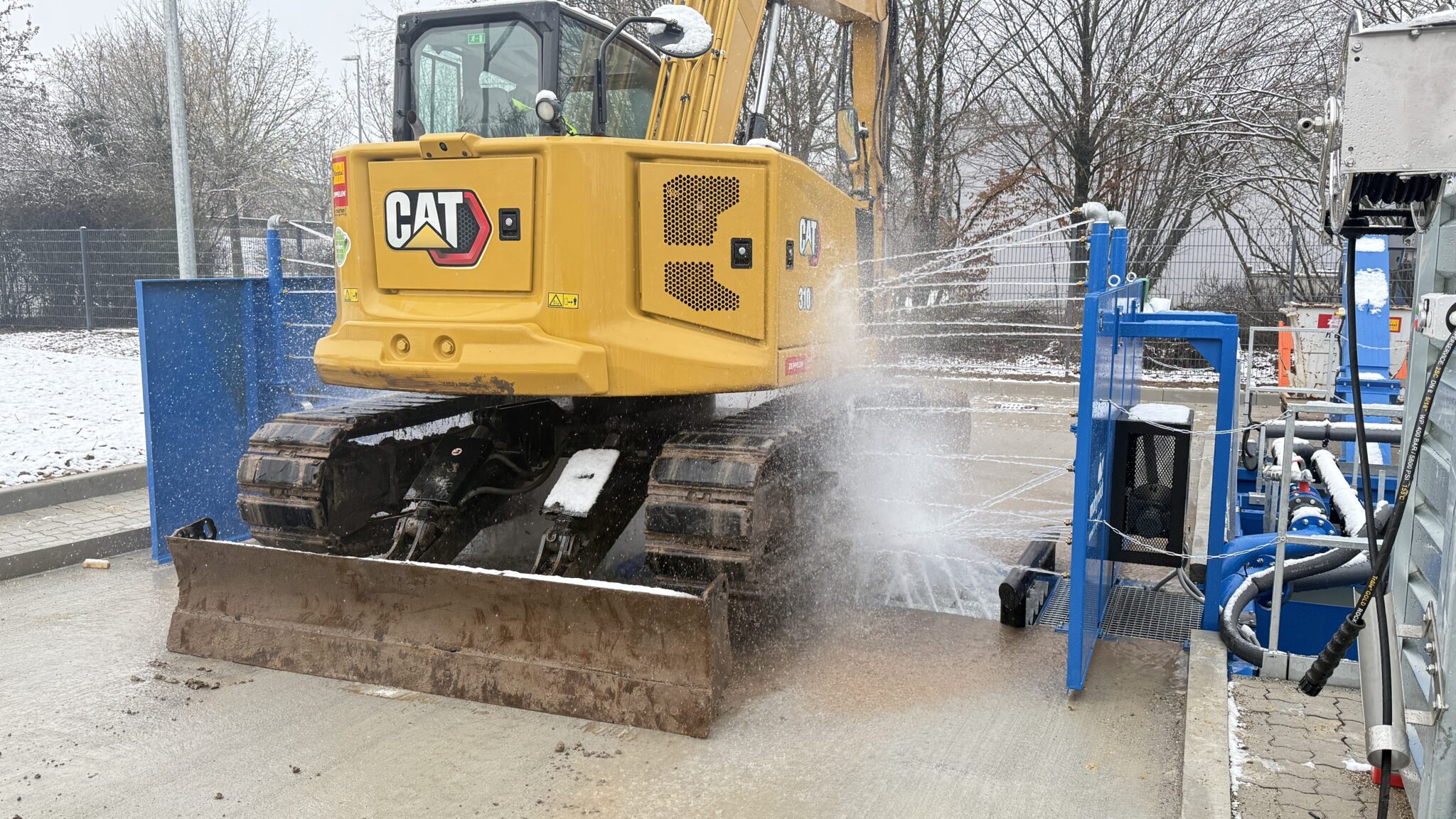E3 Water and marine Resources
| Water consumption | |||
| Impact materiality | Upstream value chain | Negative impact | Time horizon |
|
Long-term | ||
| Downstream value chain | Negative impact | Time horizon | |
| Fresh and rainwater are consumed in production and operating facilities, as well as on construction sites (e.g., in mortar production). Excessive water consumption can reduce local water resources and affect the availability of water for other uses, particularly in regions where water is scarce. | Long-term | ||
| Water withdrawal | |||
| Impact materiality | Upstream value chain | Negative impact | Time horizon |
|
Long-term | ||
| Financial materiality | Risk | Construction Equipment Service: Currently, fresh water is required primarily for the washing process. In the future, this could become more expensive, causing service costs to rise. In the worst case, it could become unavailable, which would negatively impact parts of our business model | Medium-term |
Water-intensive processes are increasingly concentrated in Zeppelin's value chain, both upstream and downstream. Water consumption also occurs to a minor extent in our business operations through the use of drinking water for employees and fresh and rainwater for irrigating green spaces and operating sanitary and washing facilities at our sites. As part of the double materiality assessment, marine resources were defined as not material to Zeppelin.
Management of impacts, risks and opportunities
Policies
Water treatment plants are associated with very high acquisition costs, but operating costs for water tend to be low. Nevertheless, to counteract negative effects, reduce financial risks, and efficiently use this important resource, Zeppelin has set a group target to reduce its own water withdrawals. In addition to the ESRS 2 regulations mentioned previously, the target is supported by a process description entitled "Water and Marine Resources." This applies to all sites throughout the Zeppelin Group and includes the following voluntary commitments:
- Providing all employees with access to clean drinking water;
- Ensure that water and marine resources are used and procured sparingly throughout the value chain;
- Use water treatment plants and rainwater to promote more sustainable water sourcing, recovery, and reuse;
- Avoid water pollution through our own activities and reduce it to the lowest possible level;
- Reduce the use of water and marine resources in product and service design as much as possible and take protective measures to prevent water pollution;
- Reduce water consumption in areas affected by water stress and water risk as part of our own operations and within the upstream and downstream value chain, e.g., through efficiency measures;
- Promote the protection of water and marine resources along the upstream value chain by working exclusively with suppliers who comply with Zeppelin's "Supplier Code of Conduct", which includes specific requirements for the established environmental standards of the respective supplier, wherever possible;
- Knowingly refrain from entering into any business relationship or other remunerated collaboration with customers, end users, etc., who contribute significantly to the overuse or pollution of water and marine resources, which has negative environmental and social impacts. Instead, promote sustainable forms of water use within the scope of available, economically justifiable options;
- In the event of knowledge of actual or potential serious overexploitation or pollution of water and marine resources in the upstream and downstream value chain, implement remedial and, if necessary, preventive measures in cooperation with the respective business partners. This can lead to termination of the business relationship.
Actions
Water risk and water stress areas
Water risk refers to the likelihood that a location will experience significant challenges related to water scarcity, water stress, flooding, deteriorating infrastructure, drought, or inadequate water management. The potential severity of future impacts is also considered. A region experiences high water stress when the demand for water exceeds the available water resources. The economical use of water is particularly important in these regions.
With the help of the Aqueduct tool program, Aqueduct 3.0 from the World Resources Institute, a detailed analysis of all Zeppelin sites was conducted to identify those with high water risk and stress. A total of 150 sites with high/very high water risk and 79 sites with high/very high water stress were identified. The areas experiencing water stress are located in Armenia, Belgium, China, Germany, India, Saudi Arabia, Turkmenistan, Ukraine, and the United States. The measures in the action plan below apply to all sites across the group, regardless of their classification as high-risk or high-stress areas.
Objectives and strategic anchoring
As part of the CSR strategy, the Group agreed to a target to reduce freshwater withdrawals. This target is supported by a modernization strategy for our owned properties, which includes measures to reduce our water withdrawal. These measures include purchasing and using rainwater cisterns and water circulation systems, as well as maintaining and repairing water pipes and supply systems.
Integrated management system
As part of the environmental management system, sites integrated into the scope of ISO 14001 address key environmental aspects. These aspects include the impact of our business activities, such as water extraction in our washing facilities when cleaning construction equipment. If the use of water or generation of wastewater is classified as a significant environmental aspect, then appropriate options for reducing the environmental impact are identified. Some of these options have already been mentioned.
Supplier Code of Conduct
Zeppelin establishes a code of conduct with its suppliers. In the code, Zeppelin and the supplier commit to fulfilling its principles and requirements and complying with applicable laws. The chapter on environmental protection explicitly mentions sustainable resource management, preferably in accordance with ISO 14001 or 50001, and the treatment and discharge of industrial wastewater.
| Goal | Key action | Expected results/ Contribution to target achievement | Scope | Time horizon | Remedial measures (if relevant) |
|---|---|---|---|---|---|
| Reduce water consumption (upstream) |
|
|
Group | Permanent | Not relevant |
| Reduce water consumption (downstream) |
|
|
Group | Permanent | Not relevant |
| Reduce water withdrawal (upstream) |
|
|
Group | Permanent | Not relevant |
| Reduce water withdrawal (financial risk) |
|
|
Group | 2030 | Not relevant |
For information on significant investments or operating expenses, please refer to E1 under the modernization strategy.
Progress 2024
| General development |
|
Group-wide policy
During the reporting period, the Group-wide process description "Water and Marine Resources," was developed and published internally. The process description reinforces Zeppelin's commitment to the economical use of water.
Reduction of freshwater withdrawal in own business operations
- A fully automated coarse dirt washing system was installed at the Markgröningen, Germany rental site at the end of 2024 and put into operation at the beginning of 2025. This system uses low pressure (approximately 1.5 bar) and a high water volume (up to 6,000 liters per minute) to clean construction machinery and vehicles. A high-pressure cleaner (max. 60 bar, 60 °C) is used for washing cabins and areas with oil and grease deposits. The wash water is recycled in a closed system. Dirt particles settle with the help of flocculants and are then removed mechanically. Water losses are compensated for with a fresh water supply, and excess water is drained into the sewage system as needed. The system is designed so that no process water needs to be discharged. Thanks to the completely self-sufficient supply of reused gray water, considerable water savings are expected compared to normal manual washing processes that use fresh water. If the system is successful, plans are in place to install similar systems at other locations.
- A water circulation system with a water treatment plant has been installed at the newly built site in Eschweiler, Germany. The system is fed by three rainwater cisterns with a total capacity of 60,000 cubic meters. The gray water is used for washing the construction machinery, as well as for the site's sanitary facilities and washing hall. The water is then filtered by a treatment plant and returned to the circulation system.




Targets and metrics
| Goal | Target value | KPI | Scope | Base year | Base value | Time horizon | 31.12.2024 | Change to | |
|---|---|---|---|---|---|---|---|---|---|
| BY | PY | ||||||||
| Reduce freshwater withdrawal | -30 % | Freshwater withdrawal | Group | 2022 | 146,754 m3 | 2030 | 122,257 m3 | -16.7 % | -7.3 % |
| 102,728 m3 | |||||||||
| Reduce freshwater withdrawal | -17.2 % | Freshwater withdrawal | Group | 2022 | 146,754 m3 | 2027 | |||
| 121,512 m3 | |||||||||
The Group has set a binding reduction target for freshwater withdrawal across all locations, including those in areas with water stress and risk. However, ecological threshold values are not defined. As part of a cascading of all CSR targets, the freshwater target was broken down to the company level.
| Country | 2024 | |
|---|---|---|
| Freshwater withdrawal | Total water withdrawal1 | |
| Armenia | 2,644 | 2,644 |
| Austria | 3,531 | 3,531 |
| Belgium | 62 | 62 |
| Brazil | 2,511 | 3,027 |
| China | 3,505 | 3,505 |
| Czech republic | 6,920 | 7,941 |
| Denmark | 4,569 | 4,501 |
| Estonia | 37 | 37 |
| France | 158 | 158 |
| Germany | 59,480 | 62,725 |
| Great Britain | 172 | 172 |
| Greenland2 | 0 | 0 |
| India | 1,086 | 1,086 |
| Italy | 394 | 394 |
| Poland | 2,281 | 2,281 |
| Russia | 1,061 | 1,061 |
| Saudi Arabia | 1,770 | 1,770 |
| Singapore | 48 | 48 |
| Slovak Republic | 1,409 | 1,411 |
| South Korea | 82 | 82 |
| Sweden | 9,770 | 9,770 |
| Switzerland | 163 | 163 |
| Tajikistan | 1,580 | 1,580 |
| Turkmenistan | 12,860 | 12,860 |
| Ukraine | 3,112 | 3,112 |
| USA | 2,729 | 2,729 |
| Uzbekistan | 324 | 324 |
| Zeppelin Group total (sum of all countries) | 122,257 | 126,974 |
| 1 Consists of gray water (treated) or rainwater and fresh water. 2 Data assigned to Denmark. |
||
As part of the double materiality assessment, it was determined that the company's water use is largely attributable to water withdrawal. For this reason, no information on water consumption is provided.

